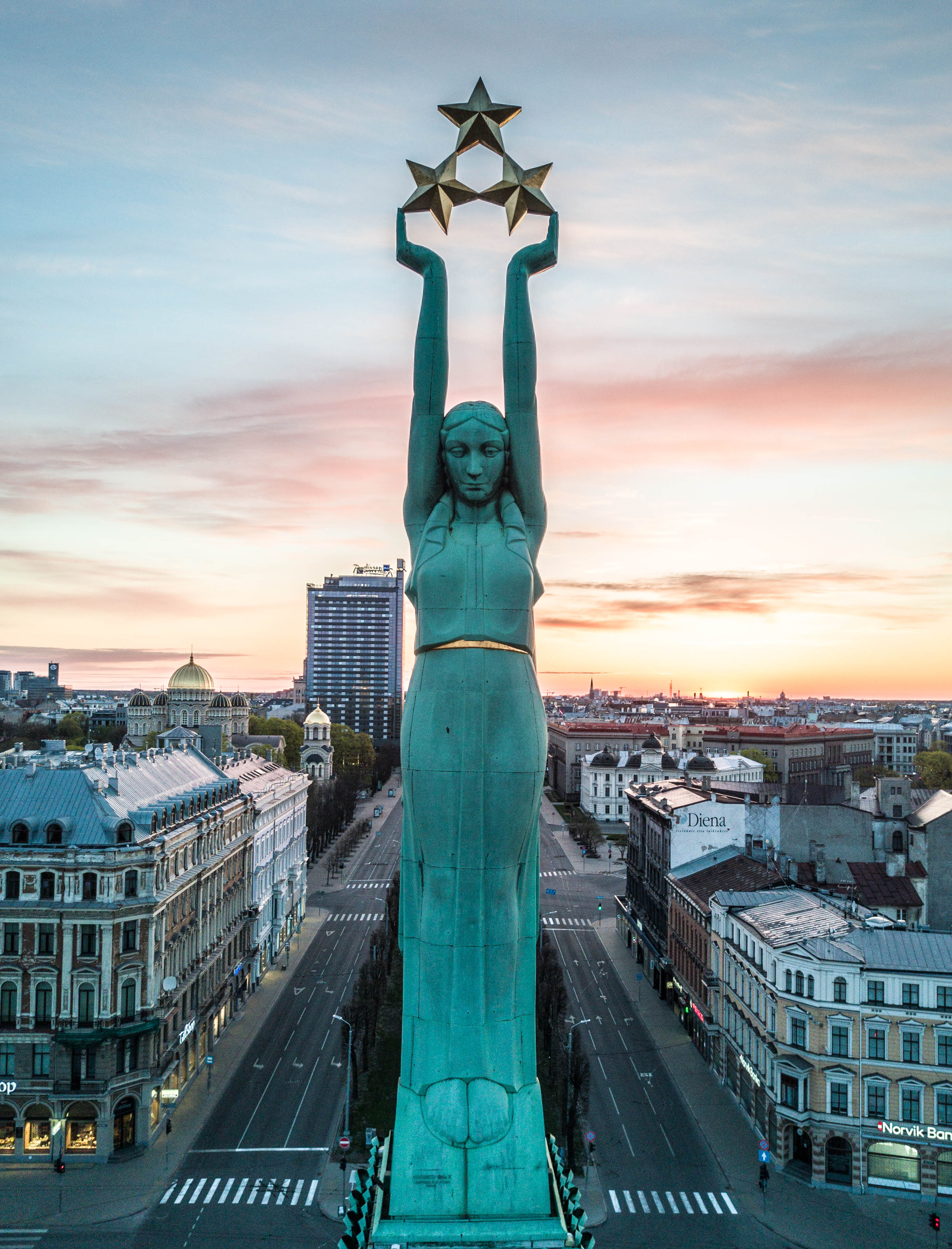About Latvia
Latvia, officially the Republic of Latvia, is a country in the Baltic region of Northern Europe, one of the three Baltic States. It is bordered by Estonia to the north, Lithuania to the south, Russia to the east, and Belarus to the southeast, as well as a maritime border to the west alongside Sweden, with a coastline of 531km along the Baltic Sea. Woodlands cover over 40 % of this low-lying country. Latvia also counts more than 3 000 lakes and 777 rivers.
Capital: Riga.
Geographical size: 64 573 km2.
Population: 1 986 096 (2015).
Official EU language(s): Latvian.
Political system: parliamentary republic.
Currency: Euro.
Local time: Latvia Time is GMT+2 (from late March until late October Latvia participates in the Western European summer time scheme: GMT+3)
Weather: Latvia’s geographical location makes it possible to enjoy the differences of four pronounced seasons. The presence of the Baltic Sea means that the climate is temperate and humid. Winter lasts from mid-December until mid-March, with an average temperature of around –6°C. January and February are usually the coldest months of the year when the temperature may drop to –25°C for days. Spring, with average temperatures of above 0 °C, comes at the end of March. April is sunny but can be unpredictable and full of surprises (including the possibility both of late snow and temperatures of +25°C). May is usually sunny and warm, as is June. Summer at June, July temperature can be up to + 30 °C. For the latest forecast, you can visit METEO.LV Last years weather has been changing and even Latvians don't know what next day will bring.
Discover the small Baltic country of Latvia, starting with its capital city of Riga. A legend has it that Riga, - a city full of cultural and historic attractions, will "never be complete, and will be (for)ever changing and developing."
About Riga
Riga is the capital and the largest city of Latvia. The 700,000 inhabitants of Riga make up one-third of the population of Latvia and makes it the largest city in the Baltic States. The city lies on the Gulf of Riga. Riga is bisected by the river Daugava. Riga's territory covers 307.17 square kilometers.
Riga was founded in 1201 and is a former Hanseatic League member. Riga is famous for its Old Town (Vecrīga) and city center (Centrs), in which over 800 buildings are of the Art Nouveau (aka Jugendstil) style of architecture. Riga was the European Capital of Culture during 2014, along with Umeå in Sweden. Riga is served by Riga International Airport, the largest airport in the Baltic states.Old (medieval) town is in the center of the city on the east side of the river. The term "Centre" loosely refers to quite a large area around Old town limited by the river to the west, the railroad lines to the east and south, and without a definite boundary to the north.
Riga’s Central Market is one of Europe’s biggest markets. It is famed for its pavilions housed in giant zeppelin hangars left behind by the German army after World War I.
Bread, beer and Balsam - Riga is an adventure for the taste buds too. The enormous Central Market is a treasure trove of earthy sausage, cheese and black bread, smoked fish, and much more. Sample the goods on a picnic in one of Riga’s lovely parks, or enjoy a hearty meal in many great value bistro and cafes.Transportation around Riga
Riga has a frequent and extensive public transport network of buses, trams and trolleybuses. Single journey tickets can be bought from the driver and cost € 2.00 (cash only).
It is also possible to buy a transport card (e-talons) for one or more journeys, with each journey costing € 1.15. The tickets can be bought at Narvesen kiosks (mini-shops) or from vending machines at a number of public transport stops, including at the airport. You have to validate the ticket each time you board a vehicle. Ticket control in Riga public transport is very active, be aware that fines are being used for not buying tickets.
For more information about public transport in Riga, please visit Rigas Satiksme web page.
Taxi services are available at Riga airport 24 hours a day and are located outside the arrivals area. The average fare from the airport to the city Centre (Old Town) is € 15-20. The fare depends on both distance and time. Better call for taxi than just take it from street.
Emergency Telephone Number: 112
Dial this number from all public telephone networks anywhere in Latvia. Calls to this number are free of charge at any time of the day, from any service provider, mobile or fixed line. Dial this number to report criminal offences, life-threatening conditions, health, safety or environmental hazards, and call respective emergency services.
Resources: https://en.wikipedia.org/
https://www.liveriga.com/lv/
http://www.investriga.com/en/about/about-riga-latvia
http://www.latvia.travel/en/city/riga-8
Public transport
- Rīgas Satiksme: www.rigassatiksme.lv
- Riga Airport: www.riga-airport.com
- Latvian Railway: www.ldz.lv
- Couch Terminal: www.autoosta.lv
Inquiries
- 24-hour hotline: www.1188.lv, phone: 1188

